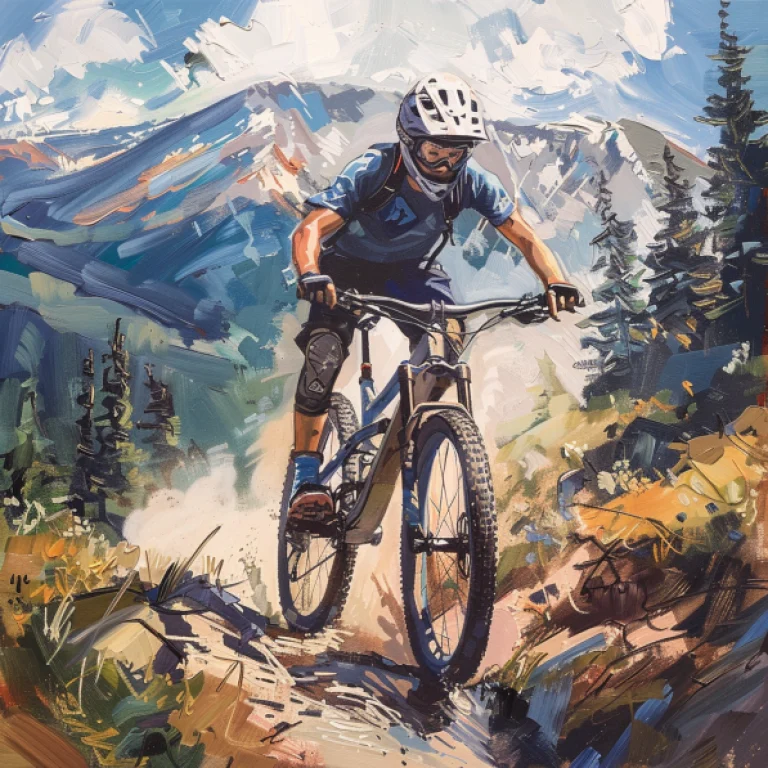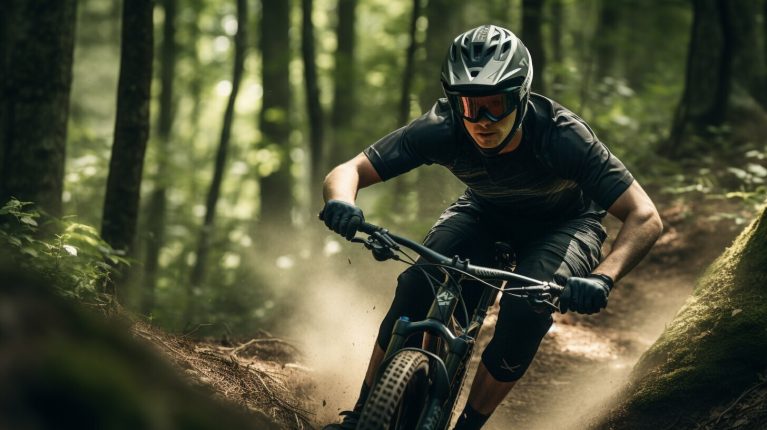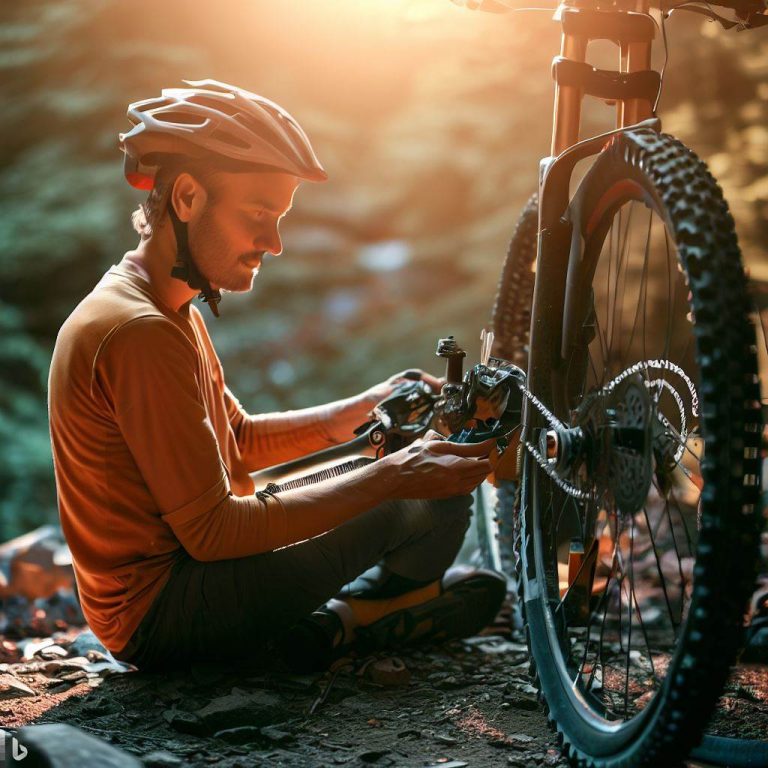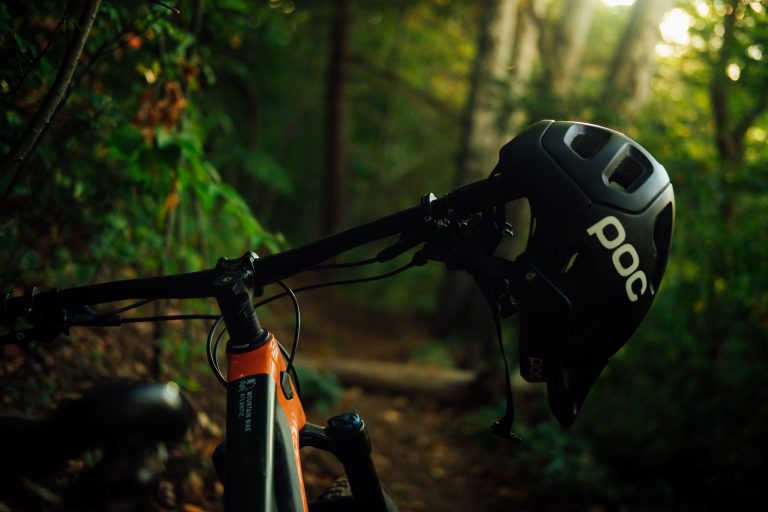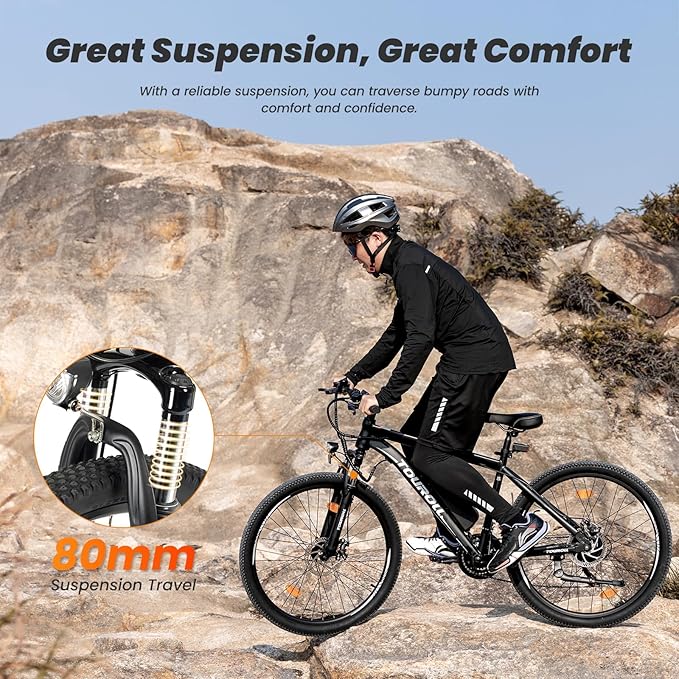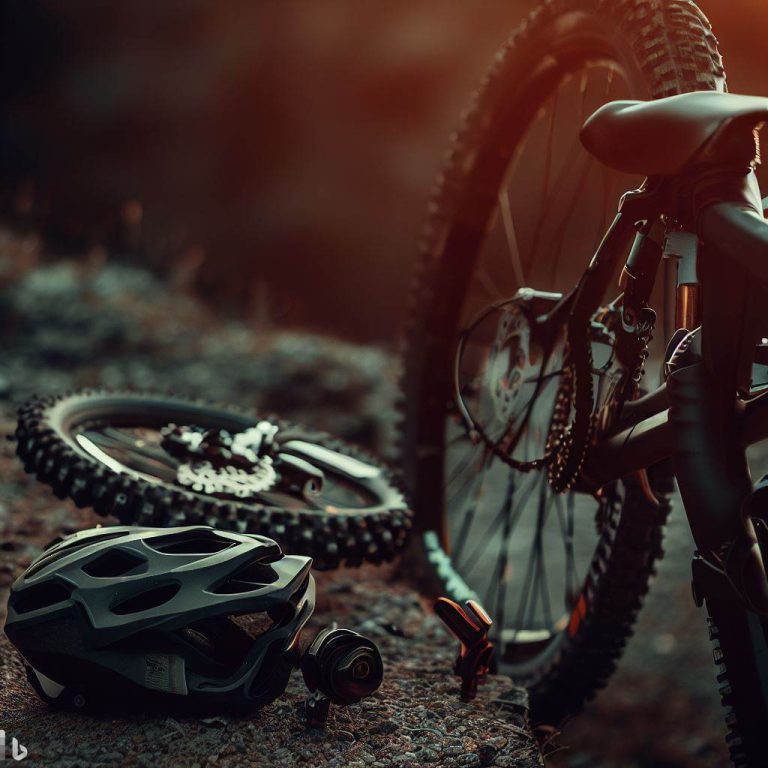Full Suspension Bikes: The Ultimate Guide for Every Rider
Mountain biking is a thrilling sport, a way to connect with nature, and a means to push your limits. One of the key decisions every mountain biker has to make is choosing the right bike. In the world of mountain biking, full suspension bikes are the undisputed champions when it comes to comfort and performance on rough terrains. But what makes them so special? Let’s dive in and find out.
What is a Full Suspension Bike?
A full suspension bike, as the name suggests, has shock absorbers for both the front and rear wheels. This dual suspension system provides a smoother ride by absorbing impact from both ends, making it an ideal choice for off-road biking and downhill trails. Unlike front suspension bikes, which only have a front shock absorber, full suspension bikes can better handle jumps and drops, providing more control and comfort for the rider.
“Full suspension bikes are the undisputed champions when it comes to comfort and performance on rough terrains.”
Why Choose a Full Suspension Bike?
The main advantage of full suspension bikes is their ability to absorb shock from both the front and rear, providing a smoother and more comfortable ride. This is particularly beneficial when riding on rough terrains, where the impact from bumps and jumps can be quite harsh.
Moreover, full suspension bikes offer better traction on downhill trails, as the rear suspension keeps the wheel in contact with the ground. This increased traction can provide more control, allowing riders to navigate tricky terrains with confidence.
Understanding the Components of Full Suspension Bikes
Full suspension bikes are more complex than their hardtail counterparts due to the addition of a rear shock absorber. The front suspension, or fork, works in tandem with the rear shock to absorb impact from both ends of the bike.
The amount of movement in the suspension, known as travel, can vary between 100-180mm, depending on the type of bike. More travel means better shock absorption, making the bike more suited for rough terrains and downhill trails. However, bikes with more travel are typically heavier and less efficient on flat surfaces or uphill climbs.
Popular Full Suspension Bike Brands
There are several brands known for their high-quality full suspension bikes. These include Trek, Giant, and Specialized, among others. Each brand offers a range of models to suit different riding styles and budgets.
For instance, the Trek Fuel EX series is known for its versatility, offering a balance between uphill efficiency and downhill capability. On the other hand, the Specialized Stumpjumper series is renowned for its exceptional performance on technical terrains, thanks to its advanced suspension design.
Full Suspension Bikes: Price and Performance
Full suspension bikes are generally more expensive than hardtail bikes due to their additional components and complex design. However, the improved comfort and performance on rough terrains can be well worth the extra cost, especially for avid mountain bikers.
It’s also worth noting that the price of full suspension bikes can vary greatly depending on the brand, model, and specifications. High-end models with advanced suspension systems and lightweight materials can cost several thousand pounds, while entry-level models can be found for a few hundred pounds.
Stay tuned for the next part of this article, where we’ll discuss how to choose a full suspension bike, the importance of regular maintenance, and answer some frequently asked questions about full suspension bikes. In the meantime, feel free# Full Suspension Bikes: The Ultimate Guide for Every Rider
Mountain biking is a thrilling sport, a way to connect with nature, and a means to push your limits. One of the key decisions every mountain biker has to make is choosing the right bike. In the world of mountain biking, full suspension bikes are the undisputed champions when it comes to comfort and performance on rough terrains. But what makes them so special? Let’s dive in and find out.
What is a Full Suspension Bike?
A full suspension bike, as the name suggests, has shock absorbers for both the front and rear wheels. This dual suspension system provides a smoother ride by absorbing impact from both ends, making it an ideal choice for off-road biking and downhill trails. Unlike front suspension bikes, which only have a front shock absorber, full suspension bikes can better handle jumps and drops, providing more control and comfort for the rider.
“Full suspension bikes are the undisputed champions when it comes to comfort and performance on rough terrains.”
Why Choose a Full Suspension Bike?
The main advantage of full suspension bikes is their ability to absorb shock from both the front and rear, providing a smoother and more comfortable ride. This is particularly beneficial when riding on rough terrains, where the impact from bumps and jumps can be quite harsh.
Moreover, full suspension bikes offer better traction on downhill trails, as the rear suspension keeps the wheel in contact with the ground. This increased traction can provide more control, allowing riders to navigate tricky terrains with confidence.
Understanding the Components of Full Suspension Bikes
Full suspension bikes are more complex than their hardtail counterparts due to the addition of a rear shock absorber. The front suspension, or fork, works in tandem with the rear shock to absorb impact from both ends of the bike.
The amount of movement in the suspension, known as travel, can vary between 100-180mm, depending on the type of bike. More travel means better shock absorption, making the bike more suited for rough terrains and downhill trails. However, bikes with more travel are typically heavier and less efficient on flat surfaces or uphill climbs.
Popular Full Suspension Bike Brands
There are several brands known for their high-quality full suspension bikes. These include Trek, Giant, and Specialized, among others. Each brand offers a range of models to suit different riding styles and budgets.
For instance, the Trek Fuel EX series is known for its versatility, offering a balance between uphill efficiency and downhill capability. On the other hand, the Specialized Stumpjumper series is renowned for its exceptional performance on technical terrains, thanks to its advanced suspension design.
Full Suspension Bikes: Price and Performance
Full suspension bikes are generally more expensive than hardtail bikes due to their additional components and complex design. However, the improved comfort and performance on rough terrains can be well worth the extra cost, especially for avid mountain bikers.
It’s also worth noting that the price of full suspension bikes can vary greatly depending on the brand, model, and specifications. High-end models with advanced suspension systems and lightweight materials can cost several thousand pounds, while entry-level models can be found for a few hundred pounds.
Stay tuned for the next part of this article, where we’ll discuss how to choose a full suspension bike, the importance of regular maintenance, and answer some frequently asked questions about full suspension bikes. In the meantime, feel free# Full Suspension Bikes: The Ultimate Guide for Every Rider
Mountain biking is a thrilling sport, a way to connect with nature, and a means to push your limits. One of the key decisions every mountain biker has to make is choosing the right bike.
Choosing the Right Full Suspension Bike
Choosing the right full suspension bike depends on several factors, including your riding style, the type of trails you ride, and your budget. Here are some factors to consider:
- Riding Style: If you mostly ride on smooth trails or use your bike for commuting, a full suspension bike might be overkill. However, if you frequently ride on rough terrains or enjoy downhill biking, a full suspension bike can provide the comfort and control you need.
- Type of Trails: Full suspension bikes excel on rough and technical trails, where the dual suspension system can absorb the impact from bumps and jumps. However, on smooth trails or roads, a hardtail bike might be more efficient.
- Budget: Full suspension bikes are generally more expensive than hardtail bikes due to their additional components and complex design. However, the improved comfort and performance on rough terrains can be well worth the extra cost.
The Importance of Regular Maintenance
Like any other bike, full suspension bikes require regular maintenance to keep them in top condition. This includes cleaning the bike after each ride, checking the tire pressure, and inspecting the brakes and gears for any issues.
Our bike maintenance guide provides detailed instructions on how to maintain your bike, ensuring it performs at its best for every ride.
“Regular maintenance is key to ensuring your full suspension bike performs at its best.”
Frequently Asked Questions About Full Suspension Bikes
In the next part of this article, we’ll answer some frequently asked questions about full suspension bikes, including their benefits, how to choose the right one, and how to maintain them. Stay tuned for more insights and tips on full suspension bikes.
1. What is the main advantage of a full suspension bike?
The main advantage of a full suspension bike is its ability to absorb impact from both the front and rear, providing a smoother and more comfortable ride. This is particularly beneficial when riding on rough terrains, where the impact from bumps and jumps can be quite harsh.
2. Are full suspension bikes good for beginners?
Full suspension bikes can be a good choice for beginners who plan to ride on rough terrains or downhill trails. The dual suspension system provides more control and comfort, which can boost confidence and make the learning process easier. However, they are typically more expensive and require more maintenance than hardtail bikes.
3. Are full suspension bikes faster?
On rough and technical terrains, full suspension bikes can be faster because the dual suspension system allows for better traction and control, enabling riders to maintain a higher speed. However, on smooth trails or roads, a hardtail bike might be more efficient and faster due to less energy loss in the suspension system.
4. How often should I service my full suspension bike?
The frequency of service depends on how often and where you ride. As a general rule, you should service your suspension system at least once a year. However, if you ride frequently on rough terrains, you might need to service it more often. Always check the manufacturer’s recommendations for specific service intervals.
5. What is the difference between cross-country (XC) and trail full suspension bikes?
Cross-country full suspension bikes are designed for speed and efficiency, making them ideal for racing or long-distance riding. They typically have less suspension travel (around 100-120mm) and a more upright geometry. On the other hand, trail full suspension bikes are designed for general off-road riding. They have more suspension travel (around 130-150mm) and a slacker geometry for better control on steep and technical terrains.
How to Choose a Full Suspension Bike
Choosing the right full suspension bike is not just about the budget. It’s about finding a bike that fits your riding style, the type of trails you ride, and your personal preferences. Here are some factors to consider:
- Frame Material: Full suspension bikes come in a variety of frame materials, including aluminum, carbon fiber, and steel. Each material has its pros and cons in terms of weight, durability, and cost.
- Wheel Size: The wheel size can affect the bike’s handling and ride feel. The most common sizes are 27.5″ and 29″. Larger wheels roll over obstacles more easily, while smaller wheels are lighter and more agile.
- Suspension Travel: The amount of suspension travel affects the bike’s performance on different terrains. More travel provides better shock absorption on rough terrains, while less travel makes the bike more efficient on smooth trails and climbs.
- Fit: The bike should fit you properly for comfortable and efficient riding. This includes the right frame size, saddle height, and handlebar position.
Remember, the best bike is the one that fits your needs and preferences. Don’t hesitate to try out different models and ask for advice from experienced riders or bike shop staff.
Full Suspension Bike Maintenance Tips
Maintaining your full suspension bike is crucial to ensure its longevity and performance. Here are some maintenance tips:
- Clean Your Bike Regularly: Dirt and grime can wear out your bike’s components over time. Use a soft brush and mild soap to clean your bike after each ride, especially if you’ve been riding on muddy trails.
- Inspect Your Bike: Regularly inspect your bike for any signs of damage or wear, such as cracks in the frame, worn-out brake pads, or frayed cables. If you find any issues, get them fixed as soon as possible.
- Lubricate Your Chain: A dry chain can wear out faster and affect your bike’s performance. Lubricate your chain regularly to keep it running smoothly.
- Check Your Suspension: Your bike’s suspension system needs regular care to perform at its best. Check the air pressure in the shock and fork, and get them serviced according to the manufacturer’s recommendations.
For more detailed maintenance tips, check out our bike maintenance guide.

